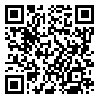Volume 8, Issue 1 (1-2020)
J. Pediatr. Rev 2020, 8(1): 35-46 |
Back to browse issues page
1- Novin Genetics Diagnostic Laboratory, Sari, Iran.
2- Department of Radiology, Faculty of Medical Sciences, Babol University of Medical Sciences, Babol, Iran.
3- Immunogenetic Research Center, Molecular and Cell Biology Research Center, School of Medicine, Mazandaran University of Medical Sciences, Sari, Iran. ,hashemisoteh@mazums.ac.ir
2- Department of Radiology, Faculty of Medical Sciences, Babol University of Medical Sciences, Babol, Iran.
3- Immunogenetic Research Center, Molecular and Cell Biology Research Center, School of Medicine, Mazandaran University of Medical Sciences, Sari, Iran. ,
Abstract: (6513 Views)
Introduction: Laing early-onset distal myopathy is a disorder with autosomal dominant inheritance pattern caused by a mutation in the MYH7 gene that encodes the human β-myosin heavy chain. Most previous studies reported this disorder with mild symptoms involving foot and hand fingers extensors as its early-onset and neck flexors as late-onset symptoms. In this study, the previously reported cases suffered from the same mutation are reviewed, too.
Case Presentation: Our study describes pathological, clinical, imaging, and genetic findings in the first Iranian patient suffering from Laing distal myopathy. The subject is an 8-year-old boy with a moderate phenotype and upper and lower limbs involvement. He also showed a weakness in neck flexors, previously reported in similar cases at early ages. A genetic study was done using the whole exome sequencing method. Next generation sequencing findings revealed a c.4850-4852AGA deletion (p.k1617del) mutation in MYH7, which previously reported as the cause of Laing distal myopathy. This case is the first indication of Laing distal myopathy from Iran.
Conclusions: Presenting the first Iranian patient with an already known MYH7 mutation associated with Laing distal myopathy will prove the previously reported heterogeneity of this disorder’s phenotype severity, morphological variation, and age of symptoms onset.
Case Presentation: Our study describes pathological, clinical, imaging, and genetic findings in the first Iranian patient suffering from Laing distal myopathy. The subject is an 8-year-old boy with a moderate phenotype and upper and lower limbs involvement. He also showed a weakness in neck flexors, previously reported in similar cases at early ages. A genetic study was done using the whole exome sequencing method. Next generation sequencing findings revealed a c.4850-4852AGA deletion (p.k1617del) mutation in MYH7, which previously reported as the cause of Laing distal myopathy. This case is the first indication of Laing distal myopathy from Iran.
Conclusions: Presenting the first Iranian patient with an already known MYH7 mutation associated with Laing distal myopathy will prove the previously reported heterogeneity of this disorder’s phenotype severity, morphological variation, and age of symptoms onset.
Type of Study: Case Report and Review of Literature |
Subject:
Genetics
Received: 2019/04/10 | Accepted: 2019/07/23 | Published: 2020/01/1
Received: 2019/04/10 | Accepted: 2019/07/23 | Published: 2020/01/1
| Rights and permissions | |
 |
This work is licensed under a Creative Commons Attribution-NonCommercial 4.0 International License. |





